Intro
Learn 5 ways to prevent stroke, reducing risk with lifestyle changes, blood pressure control, and healthy habits, to minimize stroke symptoms and promote overall cardiovascular health and wellness.
Preventing stroke is a critical aspect of maintaining overall health, as strokes can have devastating and long-lasting effects on individuals and their families. A stroke occurs when the blood supply to part of the brain is interrupted or reduced, preventing brain tissue from getting oxygen and nutrients. Brain cells begin to die in minutes. The good news is that many strokes can be prevented by making healthy lifestyle choices and managing health conditions that increase the risk of stroke. Understanding the risk factors and taking proactive steps can significantly reduce the likelihood of experiencing a stroke.
Strokes are among the leading causes of death and disability worldwide, affecting millions of people each year. The impact of a stroke can vary widely depending on the part of the brain affected and the severity of the stroke. Some people may experience mild symptoms and make a full recovery, while others may suffer from significant and permanent disabilities. The key to preventing strokes lies in addressing the modifiable risk factors, which include high blood pressure, high cholesterol, diabetes, smoking, and obesity, among others. By adopting a healthy lifestyle and effectively managing these conditions, individuals can significantly lower their risk of stroke.
The importance of stroke prevention cannot be overstated. Not only does it save lives, but it also prevents the significant morbidity associated with stroke, including long-term disability and the need for ongoing medical care. Preventive measures are multifaceted, ranging from dietary changes and increased physical activity to medication and surgical interventions for those at high risk. Education and awareness are crucial in this effort, as they empower individuals to take control of their health and make informed decisions about their lifestyle and medical care. By understanding the causes of stroke and the steps that can be taken to prevent it, individuals can reduce their risk and contribute to a healthier community.
Understanding Stroke Risk Factors
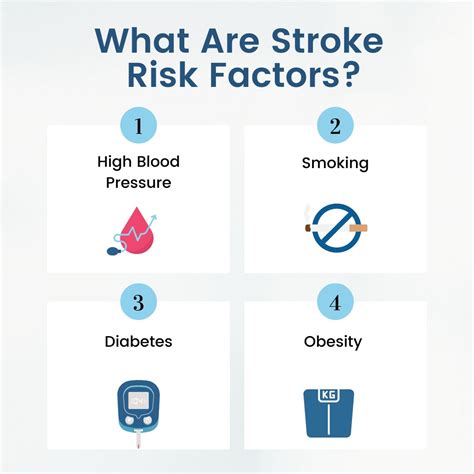
Modifiable Risk Factors
Modifiable risk factors are conditions or behaviors that can be changed to reduce the risk of stroke. They include: - High blood pressure: High blood pressure is the leading cause of stroke and can be managed through lifestyle changes and medication. - Diabetes: Diabetes increases the risk of stroke, but managing blood sugar levels can reduce this risk. - High cholesterol: High levels of low-density lipoprotein (LDL) cholesterol can increase the risk of stroke, but this can be managed through diet, exercise, and medication. - Smoking: Smoking doubles the risk of stroke, but quitting can significantly reduce this risk. - Obesity: Being overweight or obese increases the risk of stroke, but losing weight through a healthy diet and regular exercise can reduce this risk.Lifestyle Changes for Stroke Prevention
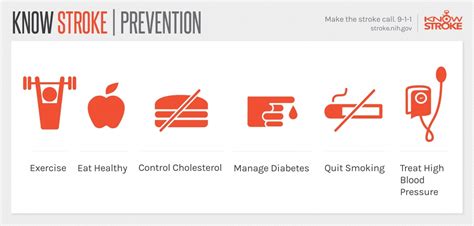
Importance of Regular Health Check-Ups
Regular health check-ups are essential for stroke prevention. During these check-ups, healthcare providers can: - Monitor blood pressure, cholesterol levels, and blood sugar levels. - Provide guidance on lifestyle changes and stress management. - Prescribe medication when necessary to manage modifiable risk factors. - Screen for other conditions that may increase the risk of stroke, such as atrial fibrillation.Medical Interventions for High-Risk Individuals
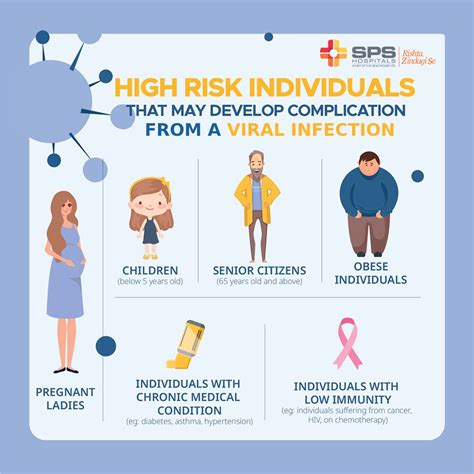
Role of Technology in Stroke Prevention
Technology plays a significant role in stroke prevention, particularly in monitoring and managing risk factors. Mobile apps, wearable devices, and telehealth services can: - Monitor blood pressure, heart rate, and other vital signs. - Track physical activity and provide reminders to stay active. - Offer educational resources and support for making lifestyle changes. - Facilitate communication with healthcare providers and improve access to care.Community-Based Initiatives for Stroke Prevention
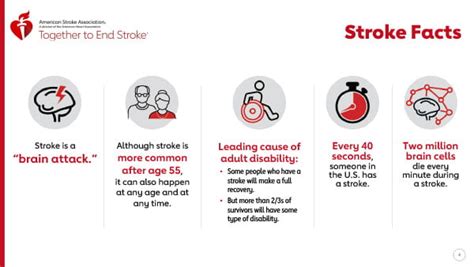
Collaboration Between Healthcare Providers and Community Leaders
Collaboration between healthcare providers and community leaders is essential for the success of community-based initiatives. This collaboration can: - Ensure that initiatives are tailored to the specific needs of the community. - Facilitate access to healthcare services for individuals at high risk of stroke. - Promote a culture of health and wellness within the community.Future Directions in Stroke Prevention
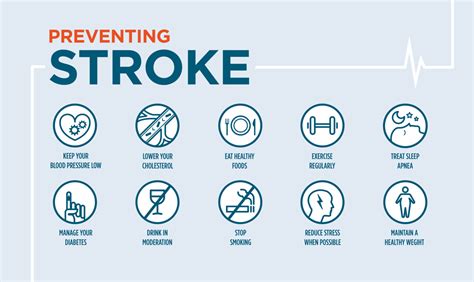
Importance of Ongoing Research
Ongoing research is critical for advancing our understanding of stroke prevention and developing new strategies for reducing stroke risk. This research can: - Identify new risk factors for stroke. - Develop more effective treatments for managing modifiable risk factors. - Improve our understanding of the mechanisms underlying stroke and how they can be prevented.What are the most common risk factors for stroke?
+The most common risk factors for stroke include high blood pressure, diabetes, high cholesterol, smoking, and obesity. Managing these conditions through lifestyle changes and, when necessary, medication, can significantly reduce the risk of stroke.
How can I reduce my risk of stroke?
+You can reduce your risk of stroke by making healthy lifestyle choices, such as eating a balanced diet, engaging in regular physical activity, quitting smoking, limiting alcohol consumption, and managing stress. Regular health check-ups are also essential for monitoring and managing modifiable risk factors.
What role does technology play in stroke prevention?
+Technology plays a significant role in stroke prevention by providing tools for monitoring and managing risk factors, facilitating communication with healthcare providers, and offering educational resources and support for making lifestyle changes. Mobile apps, wearable devices, and telehealth services are examples of technologies that can support stroke prevention efforts.
As we move forward in our efforts to prevent stroke, it is essential to remember that prevention is a collective effort that requires the involvement of individuals, communities, healthcare providers, and policymakers. By working together and leveraging the latest advancements in technology, medicine, and community-based initiatives, we can reduce the incidence of stroke and improve the health and well-being of individuals worldwide. We invite you to share your thoughts on stroke prevention, ask questions, and explore the resources available to help you or your loved ones reduce the risk of stroke. Together, we can make a difference and create a healthier future for all.
